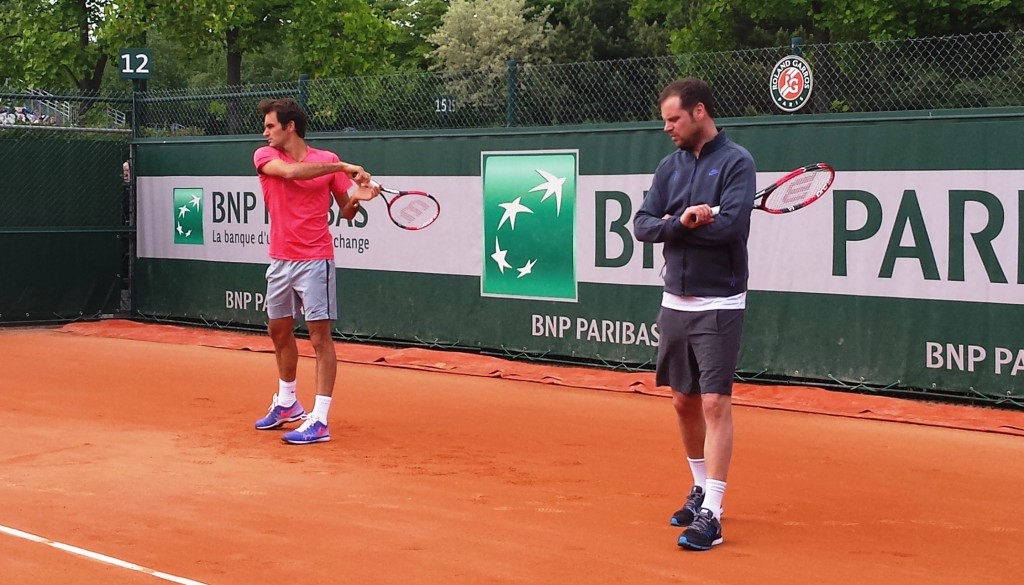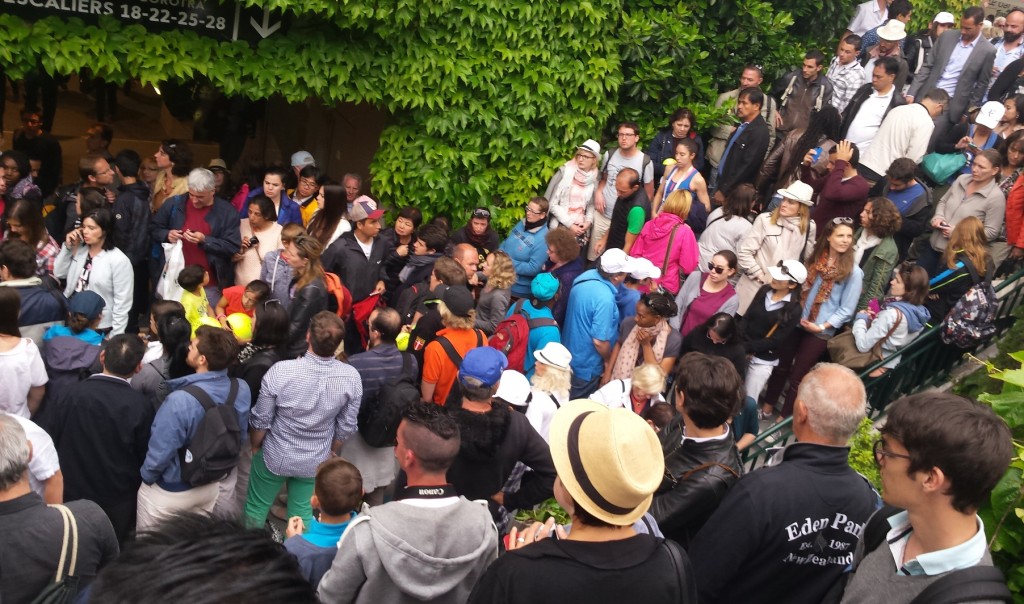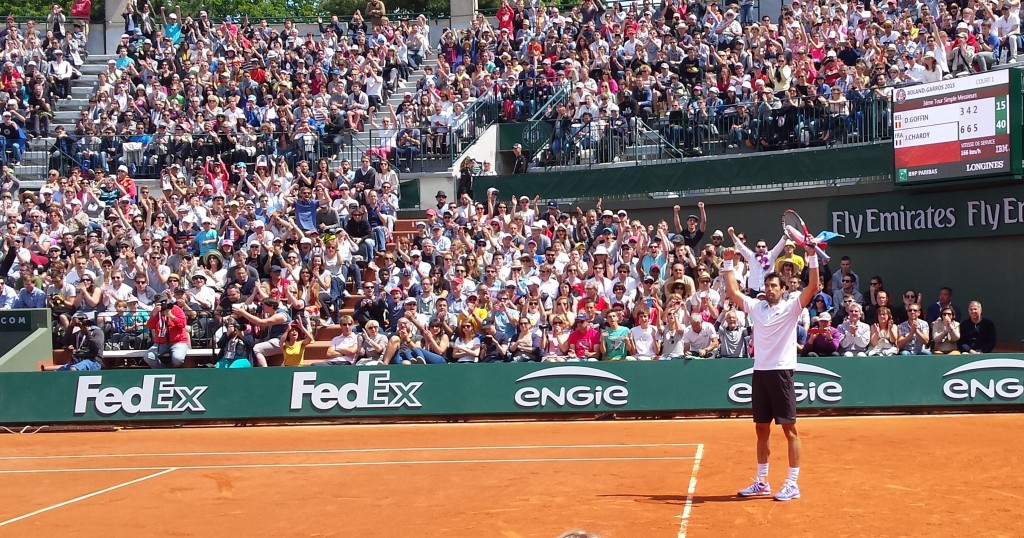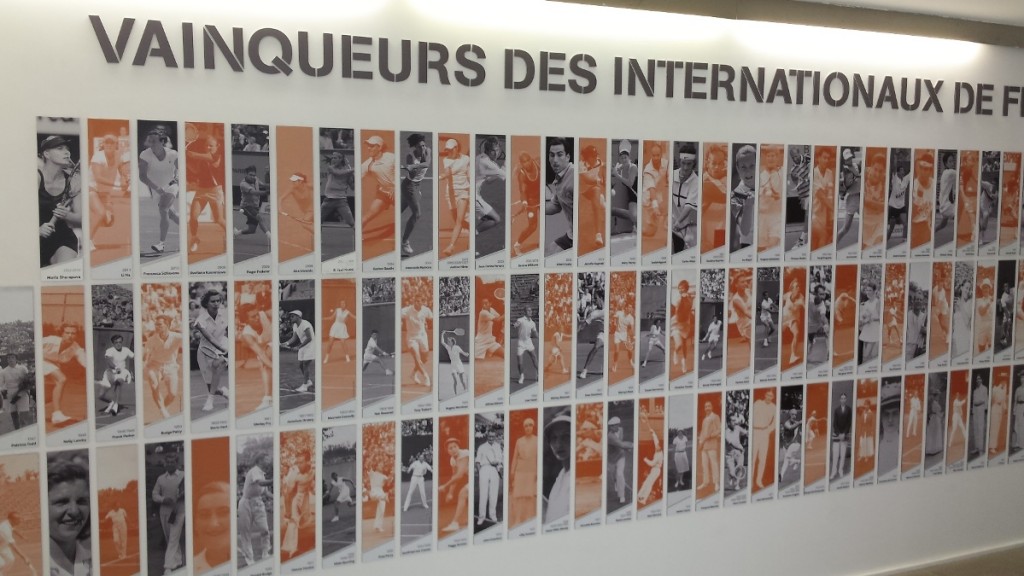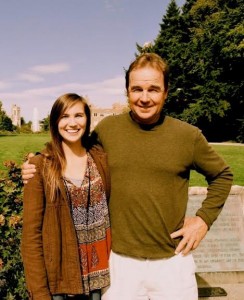There is no need for a “warning: spoilers” notice for this review. If you are a tennis fan, you know the two names in the title. You have seen, or heard of, their exhilarating encounter in the finals of Wimbledon in 1980 that included a tiebreaker for all ages. If you are not, and you don’t know much about it or the two players, a short trip through the internet should prepare you for an enjoyable hour and 40 minutes of viewing.
In fact, never mind if you do not know any details of Wimbledon 1980. Because, at the end of the day, the film is so much more than that.
Borg vs McEnroe skillfully veers the attention away from the question of “who won it” and directs it toward the personalities of Björn and John. The spotlight is clearly on the “how” and “why” of the “who.”
The story takes place during the summer of 1980 and centers on the events that led up to that historical Wimbledon final. There are no mysteries per se. The plot-related portion of the movie builds toward the climax that reproduces the five-set final that ended with Borg taking home his fifth trophy in a row on the grass courts at SW19.
The narrative’s pace only serves as a tool to complement the core of what director Janus Mets and writer Ronnie Sandahl intend to deliver, which is an in-depth look at the portrait of two legendary figures, how the summer of 1980 defined their rivalry, and in a larger sense, the so-called first “golden era” of men’s tennis.
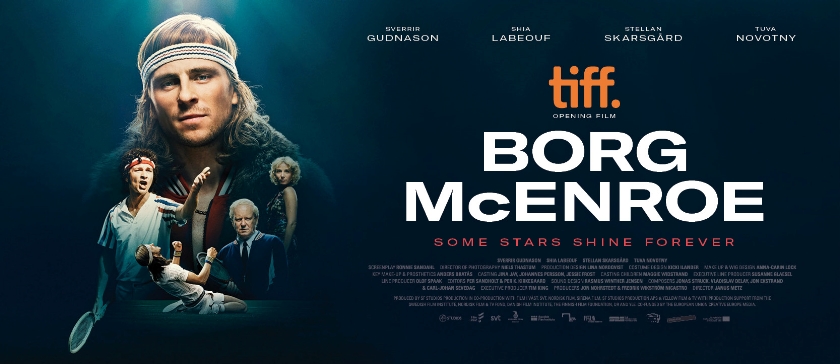
I will confess that I am not a fan of tennis-based films. I have not liked any of them in the past. Perhaps it is because I find cinematic drama and tennis incompatible or because I get too nit-picky with the actual tennis shown on screen, which is probably the same thing that real-life detectives – or criminals – do when they watch an episode of CSI or Blue Bloods on TV. I roll my eyes. I get annoyed. I snicker at how unrealistic the actual tennis being shown appears and at how the comportments of tennis players turn loony in the name of creating dramatic effect. With tennis-related films, I am like those gate-keeping Star Trek fans who choose to ignore 50+ years of visual-tech improvements in filming when they see the visually updated version of the Enterprise in the current Star Trek: Discovery series, and throw tantrums because it is not identical to the version of the Enterprise of Kirk and Spock concocted with the technique available in the 1960s.
Having said that, there is a first time for everything. I rarely felt that way during Borg vs McEnroe. Mets and Sandahl, with the assistance of some gripping performances by the cast and a terrific score by the composers, succeed in putting forth a compelling behind-the-curtains story of two champions vying for the top spot in the sport, without ever letting the on-screen drama choke the story-related one.
There is slightly more focus on Borg than on McEnroe. Whether it was intentionally done that way, or not, does not matter because it works in the film’s favor, thanks to the tour-de force performance delivered by Sverrir Gudnason as Björn. I am not exaggerating when I say that during some of the off-court scenes involving Borg, I truly felt like I was looking at the legend himself. And I cannot begin praise enough how well Gudnason acted during the on-court scenes considering that he never played tennis in his life and had six months to prepare for the role. Wow!
He had Borg’s backhand and footwork down to perfection and was pretty close with his serve and forehand – the elbow on the latter’s backswing being slightly off. He even managed to make some of the errors and winners he hit correspond closely to the actual errors and winners by Borg, especially on key moments such as the points that deiced the set and the match.
As noted above, I nit-pick when it comes to tennis-related films, so I would be lying if I said that there were no inaccuracies. Few points in the epic fourth-set tiebreaker were out of order in terms of who is serving, and others ended differently than portrayed in the film. Centre Court looked slightly different in details than it did in 1980 (ex: no standing-room crowd) for understandable reasons. Gudnason sometimes showed, probably by design, just a tiny bit too much intensity in his facial expressions on the court between points than the ice-like Borg did.
There is one major inaccuracy that I will mention at the end but the ones above are completely acceptable considering how much the film gets right! It would be unfair to praise Gudnason’s acting without doing the same for Stellan Skarsgård playing Björn’s disciplinary mentor-coach Lennart Bergelin, Tuva Novotny playing his faithful companion and soon-to-be wife Mariana Simionescu (they got married shortly after the events in the film – divorced four years later), Scott Arthur playing John’s long-time friend and doubles partner Peter Fleming, and Robert Emms playing Vitas Gerulaitis, the flamboyant tennis star and party-time friend of Björn and John.
There is a reason why the film’s most compelling stretch takes place in a four-scene sequence that begins around the 26-minute mark. The actors mentioned above nail the sequence to perfection and it deserves a closer look.
It starts with the most meaningful conversation of the movie from Borg’s perspective. Mariana notices Björn solemnly staring at London from the balcony of the hotel, but she knows better. His mind is in turmoil – and Novotny’s two-second-long look makes that clear to viewers. She joins him and Björn asks, “Can you picture me doing anything else? Besides tennis?” Mariana answers “yes” and throws the question back at him, “Can you?” Björn remains silent, leaves the question unanswered. It’s an intimate moment that anticipates much larger implications – not explored in the movie – if you are familiar Borg’s post-tennis life.
The music slightly takes a haunting tone and we next see Bergelin and Borg walk through the tunnel at Wimbledon on the way to a first-round match against Ismail El-Shafei. Remember when I said above that there were times when I felt like I was looking at Borg and not at Gudnason? This 23-second-long scene is it. I am watching Gudnason and Skarsgård, but I am seeing Borg and Bergelin.
Speaking of El-Shafei, here is a good example of how much the film gets right. Most tennis fans have probably never heard of him, let alone seen him play. I have, and I can tell you that in those brief shots of the match, the player who acted as El-Shafei got every stroke right, beginning with the awkward swing on his lefty two-handed backhand.
The next scene picks up McEnroe watching Borg’s match in his hotel room as Fleming comes to visit. They converse briefly about the draw that McEnroe painstakingly chalked up on the wall of his hotel room and banter about their potential match in the quarterfinals. Vitas meets them in the lobby next. He brought along a few women – as only Gerulaitis would do – and takes them, along with John, to a bar. The scene takes a new dimension when Vitas begins describing to John – while smoking, drinking, and being fondled by the women – Borg’s obsessions with keeping the same routine every time he is at Wimbledon.
It is further enhanced with the montage of Borg and his entourage of two, Mariana and Lennart, doing the exact things that Vitas is describing to John. Mariana arranges his bag in the same way, Lennart and Borg check his rackets, Borg measures his pulse while resting (which would astonishingly reach as low as 40 beats per minute for those that may not know), takes two towels to the court, etc. Borg’s routine is “like a fucking religion,” Vitas says to John. “Same meticulous order, what is that?” he asks. It’s a rhetorical question. The point is well made. In a creative scene, led by a Emms’s great delivery of lines as Vitas, we learn about Borg’s compulsive fixation to details.
If this seven-minute-long, four-scene sequence does not make you believe that you are watching a quality film, I don’t know what will. Is it a biopic? A psychological thriller as Mets himself says? A sports movie? The genre is hard to define, but it works.
Shia LaBeouf also does well with the script provided. It is obvious that he is directed to underline the irascible side of McEnroe, but I am not sure if he was supposed to make McEnroe look as insecure as he did in certain scenes. In any case, he manages to get most of McEnroe’s game down, although not as good as Gudnason gets Borg’s. And this is where some masterful camera work takes care of anomalies. There are just enough split-second cuts to show McEnroe serving, or hitting a shot, to make it believable. John’s dad is also portrayed well by the accomplished Ian Blackman.
There is a scene at the end when Borg and McEnroe meet briefly at the airport. It probably never took place in real life, at least not in the way depicted in the film. This is where we must not forget that we are watching a movie and not a documentary. The two protagonists act as if this is the first conversation they are having, and you can sense that they earned each other’s respect. It’s wonderfully played by LaBeouf and Gudnason and whether it took place or not in real life is irrelevant. We know that the two admired each other, we know that their 1980 Wimbledon encounter helped define their friendship in the later years. That is the purpose of that scene, nothing more, nothing less.
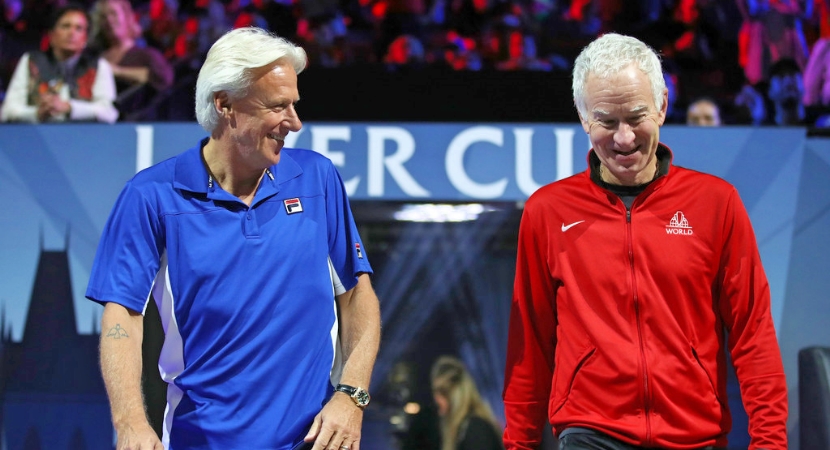
(Photo: Julian Finney – Getty Images)
Few seconds later, we get to read a few sentences enlightening us on what happened since Wimbledon 1980 in the lives of Borg and McEnroe, and this is where the one major inaccuracy appears. And it is a shame. Because this was the perfect opportunity to set the record straight on the long-term misconception that many people have with regard to the reasons behind Borg’s retirement. He did not walk away from tennis in 1981 as the film. Many McEnroe fans would like you to believe that, because it feeds the false narrative that Borg retired because he “understood he could not beat McEnroe again.” I should also mention that McEnroe does not go out of his way to debunk this myth although he knows better.
McEnroe has made an art form out of writing history in his favor and not touch misconceptions that favor him. He said in his 2002 autobiography You Cannot be Serious that he led Lendl by two sets and a break, which is not true, and did nothing to correct it when it became the narrative for years to come, just like he never made an effort to debunk the above myth. Ironic isn’t it, that he is the one to complain about the movie’s portrayal of himself while Borg, who suffers the one injustice, has nothing negative to say about it.
The truth is Borg did not want to play the full schedule required by the ITF in 1982. The ITF, in return, was going to force him to play qualifying in the Majors. Thus, Borg decided not to play them in 1982, but kept on practicing hard and played a considerable schedule of events outside the confines of the ITF. Retirement was far from his mind and he was planning to find a way to resolve the disaccord with the ITF and return to the circuit in 1983. In fact, he played McEnroe a number of times in other tournaments – non-sanctioned events were taken seriously by top players as long as there was good prize-money involved – and beat him more than once. The latest was in November of 1982, a four-set victory for Borg, in the 1982 AKAI Gold Challenge tournament in which he also defeated Ivan Lendl handily in straight sets.
The Swede officially retired in the beginning of 1983, once he realized that the issue with the rules was not going to get resolved. He simply refused to play the number of tournaments required. He chose the 1983 Monte-Carlo tournament as his retirement outing.
This is the only sore spot, as far as I am concerned, of Borg vs McEnroe and I am not even sure how much importance it carries for most tennis fans. It is a thoroughly enjoyable film otherwise and very deserving of the accolades that it has received so far. My appeal to future directors of tennis-based films would be to learn the necessary lessons from this film’s success and avoid the pitfalls of others preceding it.
Notes:
– Leo Borg, Björn’s son and a tennis player himself, plays the younger Borg.
– Flashbacks are frequently used to tell the childhood stories of the two stars.
– Studio 54 scene with Borg observing people’s behaviors is brilliant.
– Did they go overboard with some of the disciplinary methods employed by Bergelin? I think so.
– Of Borg, Gerulaitis says, “They say he is an iceberg, and really, he is a volcano keeping it all in, until Boom!” Haunting line indeed, considering the post-retirement troubles of Borg.
– They showed McEnroe’s tumble on the ground on his set point at 8-7 in the tiebreaker. It would have been even better if they showed Borg do the same two points before on his match point at 7-6. It would have better depicted the truth even more accurately. Both players indeed put 100% of their bodies and minds on the line to win.
— THE END —


